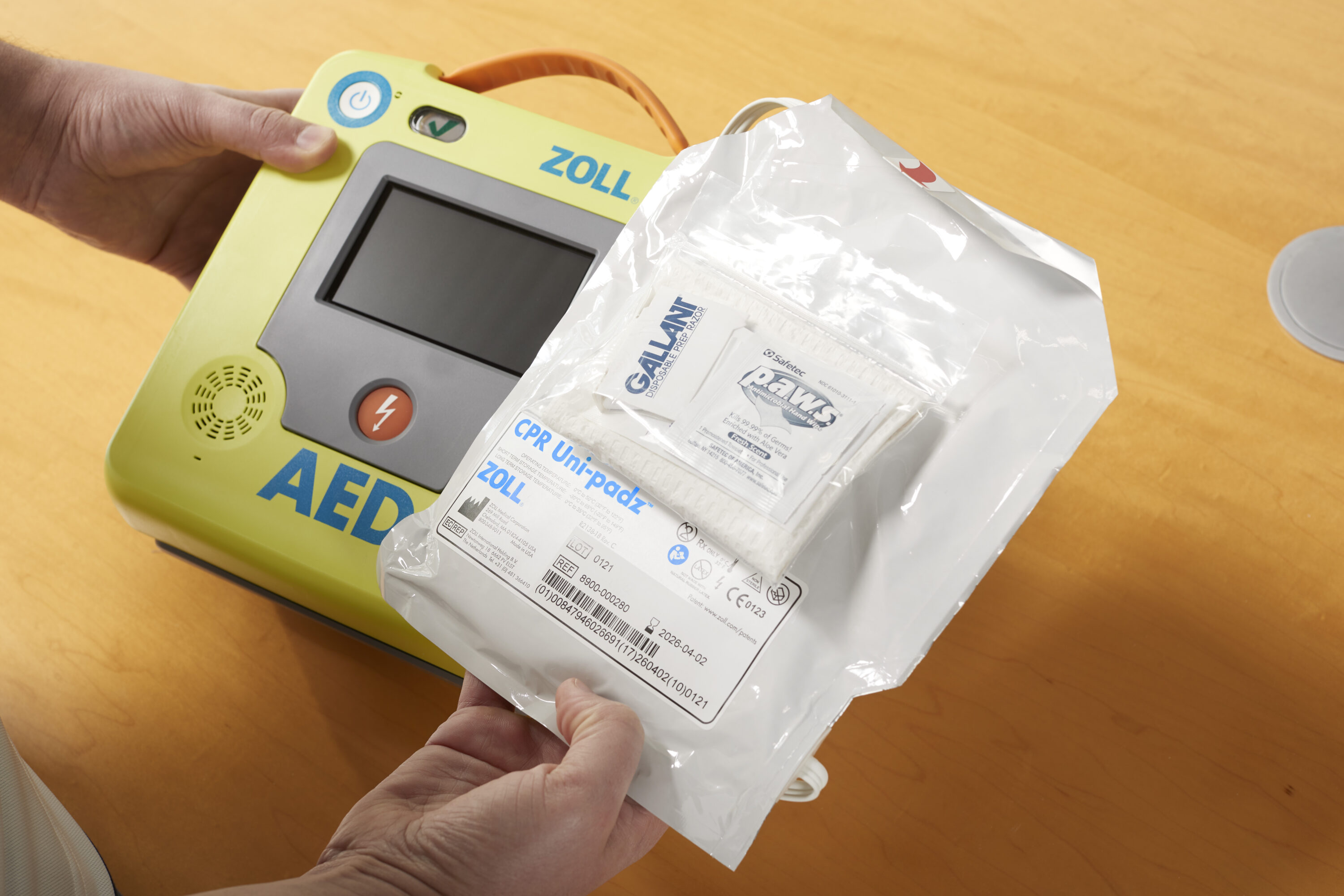® 2016 - 2024 PVS-SPA
VAT ID IT06532250153
eq. capital Euro 624.000 i.v.
company register MI n. 215184
R.E.A. MI n. 1103165
via Leonardo Da Vinci, 18
20051 Cassina De Pecchi MI
TEL +39 029160011
FAX +39 0291600310
E-mail: info@pvs-spa.it

Is periodic maintenance of defibrillators mandatory? Let’s find out
The correct maintenance of semi-automatic external defibrillators (AEDs) is essential to guarantee their efficiency and safety. However, it is necessary to clarify some misinformation that is circulating regarding these life-saving devices.
AEDs are Electromedical Devices
AEDs (Automated External Defibrillators) are classified as electromedical devices. According to the Medical Devices Regulation (MDR), all AEDs have been placed in Class III, emphasizing the importance of regulatory compliance and proper maintenance protocols.
Simplified Electrical Safety Checks
Although AEDs are electromedical devices, they are classified as internally powered devices since they cannot be connected to the 220V electrical grid. This simplifies electrical safety checks compared to devices that require mains power. These checks are less complex and generally easier to perform.
Functional Checks vs. Electrical Safety Checks
There is often confusion between functional checks (also called routine maintenance) and electrical safety checks. Functional checks should be performed according to the manufacturer’s recommended schedule, while the specifics of how to conduct electrical safety checks are not within the manufacturer’s scope, as they are regulated by international, national, and sometimes local standards.
Regarding routine maintenance, according to the manufacturer’s instructions, both the AED 3 and AED Plus from ZOLL do not require additional checks beyond the weekly self-tests they perform automatically. The owner only needs to periodically check the status indicator and the expiration date of the electrodes (only AED 3 connected to CPR UniPadz performs the latter check automatically).
MDR Compliance for Maintenance
According to the MDR, customers must perform routine maintenance on AEDs, adhering at least to the manufacturer’s instructions. If a customer chooses to conduct more frequent maintenance, whether due to internal protocols or local regulations, these actions are outside the manufacturer’s recommendations and are the customer’s responsibility.
Who Can Perform Routine Maintenance?
The MDR requires following the manufacturer’s recommendations. For ZOLL devices, this means that any functional check must be performed by personnel trained and authorized by ZOLL. If maintenance is performed by unauthorized third parties, both the customer and the service provider assume responsibility for any issues, not the manufacturer.
Electrical Safety Checks
ZOLL does not specify the necessity or frequency of electrical safety checks. These are regulated by standards such as the CEI, which require all electromedical devices to undergo electrical safety checks at least once a year. For internally powered devices like AEDs, these checks are straightforward and mainly involve ensuring there are no current leaks on the device’s casing or applied parts.
Who Can Perform Electrical Safety Checks?
Any certified technician can perform electrical safety checks, provided they have the necessary qualifications.
Routine Maintenance vs. Electrical Safety Checks
It is important to note that routine maintenance and electrical safety checks are distinct activities. Electrical safety checks may be part of a routine maintenance protocol, but routine maintenance generally refers to the functional checks specified by the manufacturer.
Conclusion
Maintaining defibrillators is crucial for their effectiveness, but it is essential to rely on authorized services and follow the manufacturer’s instructions to avoid unnecessary interventions and maintain product warranty. Don’t be misled by false economies: choosing a quality AED and adhering to the manufacturer’s recommendations is the best choice to ensure safety and save lives at critical moments.
Discover our range of AEDs and further information on proper maintenance by visiting our website.




